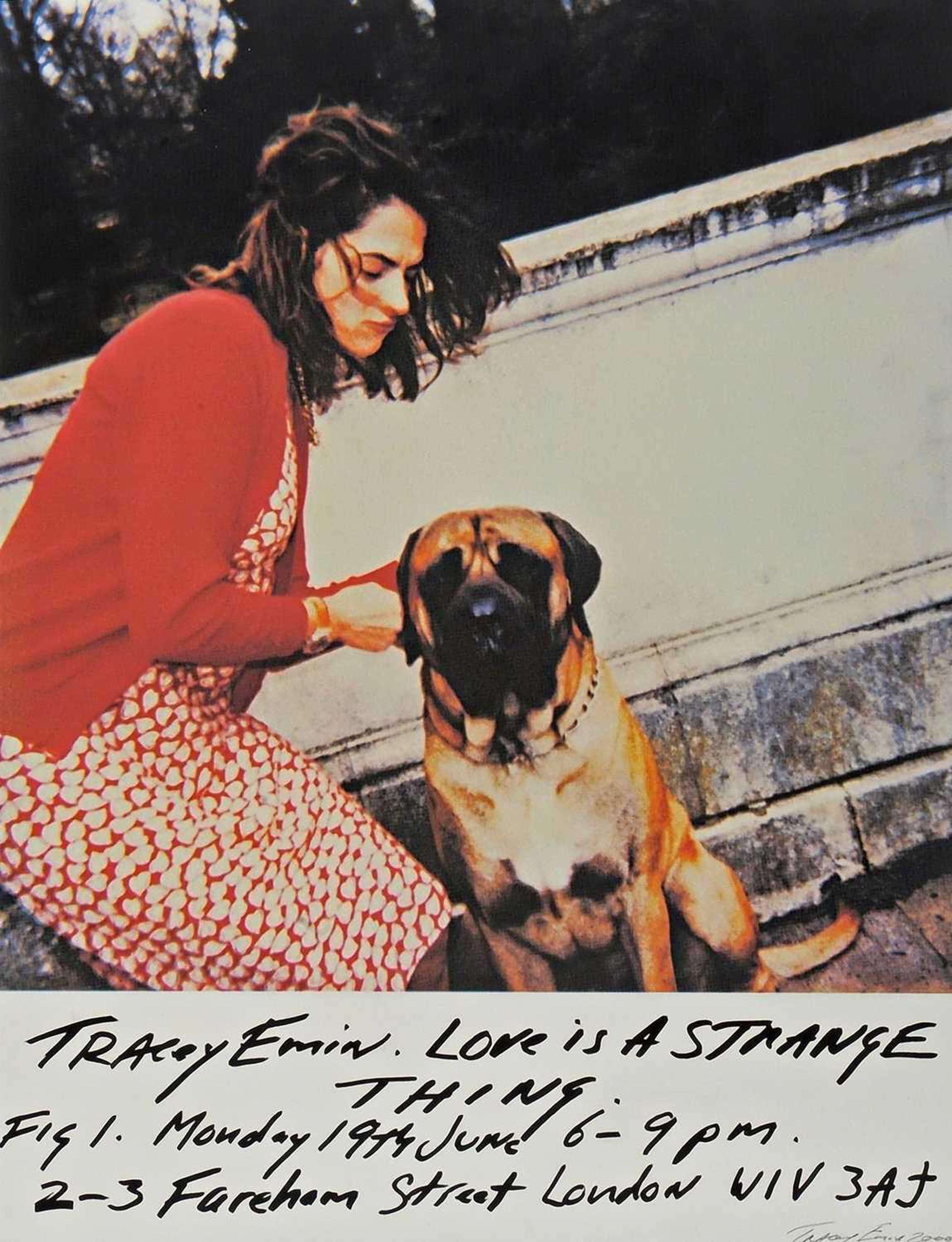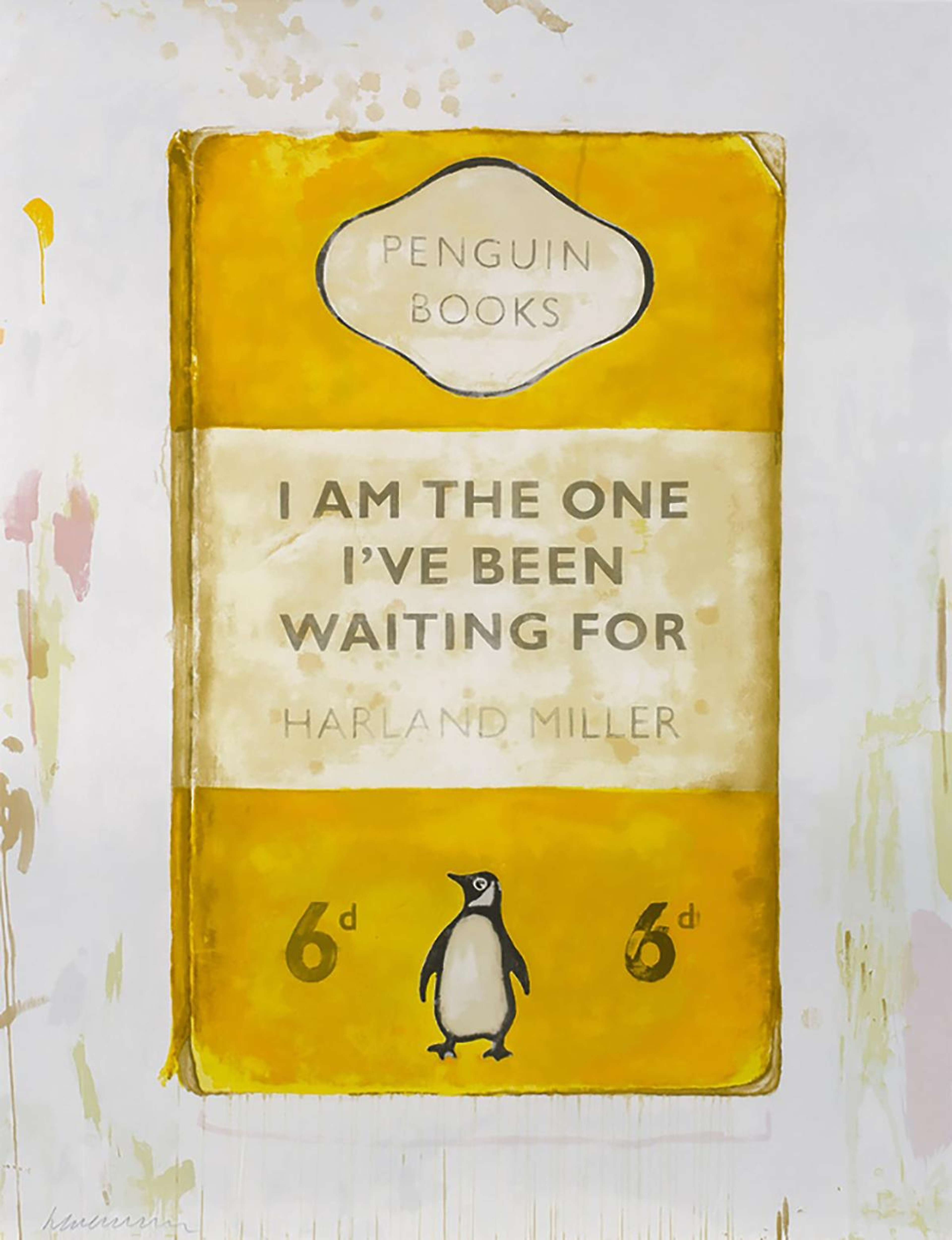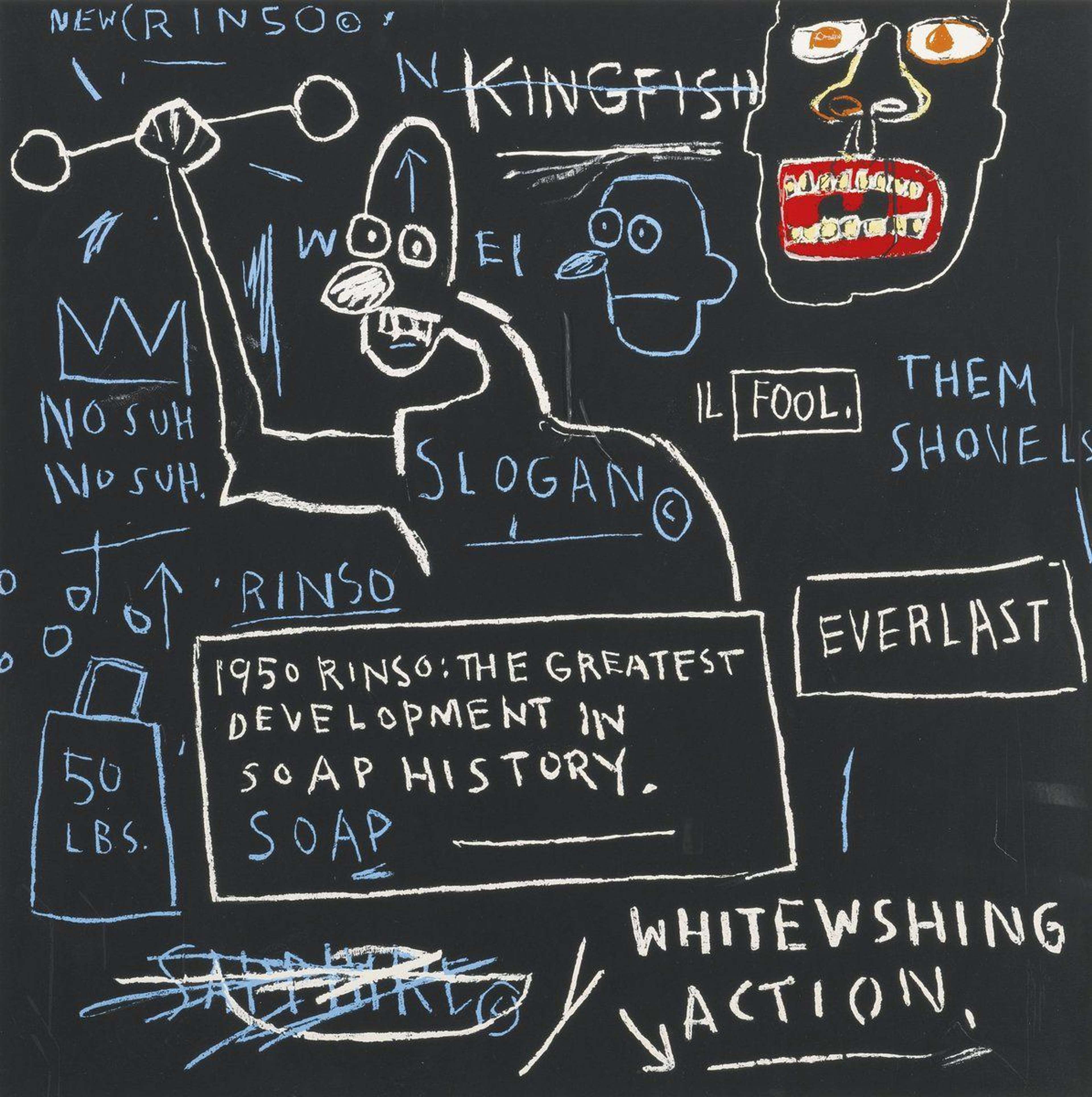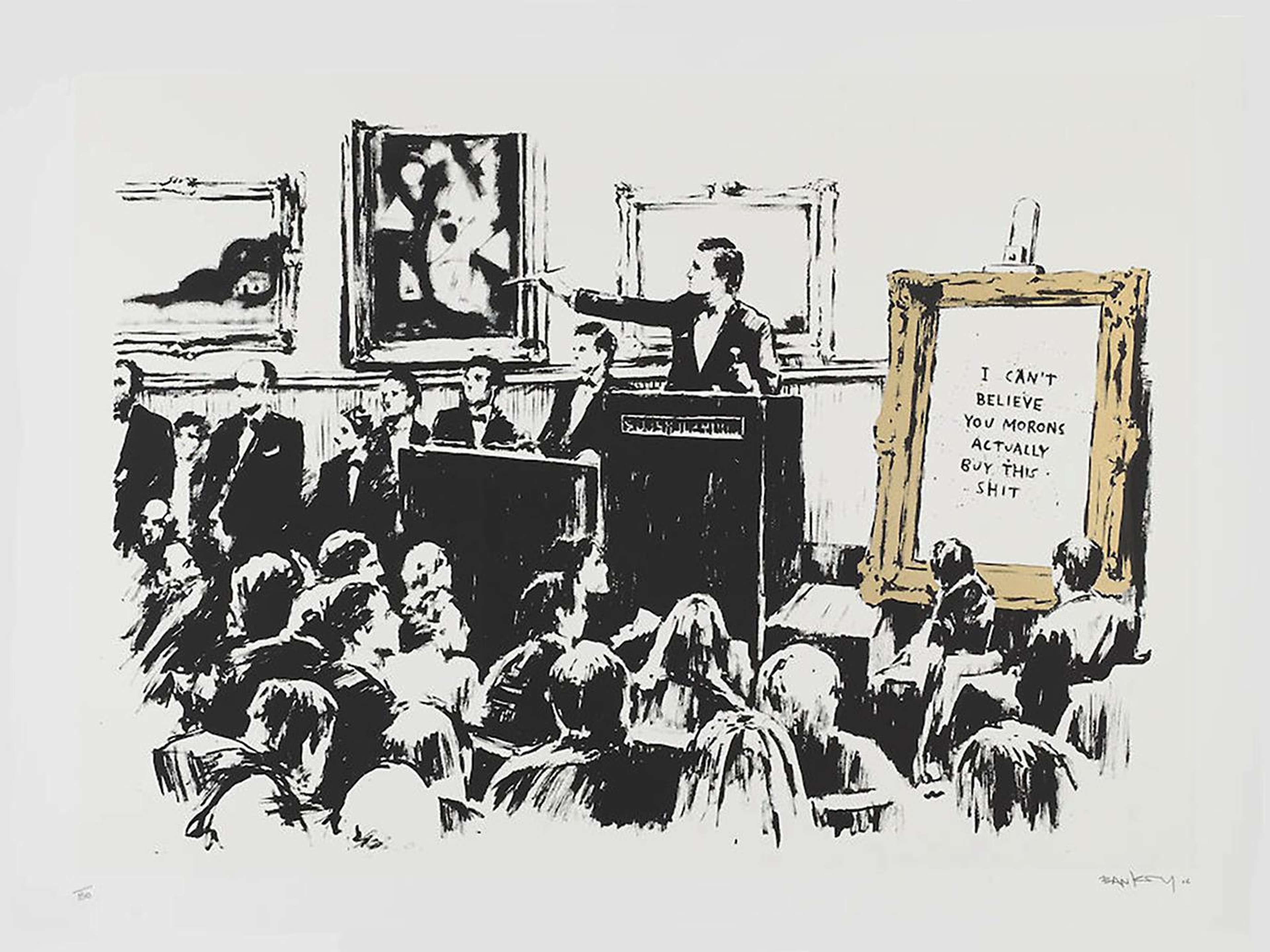Words in Frames

 Occupy The Space You Are Given As Best You Can © David Shrigley 2022
Occupy The Space You Are Given As Best You Can © David Shrigley 2022Market Reports
The evolution of text in visual art is a fascinating journey that reflects broader shifts in cultural, social, and technological contexts. This can be witnessed in several key phases, each characterised by its unique approach to integrating text and image, and by the artists and movements that have defined its course – especially from the 20th-century onwards. Today, the interplay of text and image in art is more diverse and complex than ever, propelled by digital technology and global connectivity. At the same time, its immediacy and accessibility make it one of the most popular types of art of our time.
The Evolution of Text in Visual Art: From Pre-Modern to Contemporary
In pre-modern art, text often served a complementary role, providing narrative explanations or religious texts alongside visual depictions. Mediaeval illuminated manuscripts are prime examples, where text and image were intricately interwoven to convey spiritual stories and doctrines. In these works, the visual and the verbal were inseparable, each enhancing the meaning of the other. The Renaissance brought a renewed interest in the classical harmony of text and image, as artists like Leonardo da Vinci incorporated text in their sketchbooks as annotations, reflections, and scientific observations, blurring the lines between art and research. However, in the grand paintings of the time, text usually remained secondary to the image – occasionally appearing as captions or pinxits. The Enlightenment period saw an increase in printed materials, including broadsheets and political cartoons, where text and image began to interact more dynamically to critique and inform.
The turn of the 20th century and the rise of modernism marked a significant shift, with movements like Cubism, Futurism, and Dada challenging traditional narratives and aesthetics. Artists like Pablo Picasso and Georges Braque incorporated newspaper clippings and printed words into their paintings, reflecting the fragmented, fast-paced reality of modern life. The Dadaists often used text in their collages and photomontages as a tool for political and social critique, emphasising the arbitrary relationship between signifier and signified. The mid-20th century's Pop Art movement brought text to the forefront of visual culture, mirroring the explosion of advertising and mass media. Artists like Roy Lichtenstein and Andy Warhol drew directly from comic strips and consumer packaging, using text both as visual form and as commentary on popular culture. Postmodernism has furthered the exploration of text in art, with artists like Barbara Kruger and Jenny Holzer using words to challenge assumptions about identity, power, and social constructs. Their work often features bold, direct text, engaging the viewer in a dialogic process.
Roy Lichtenstein: The Pop Art Dialogue
In the mid 20th-century, Lichtenstein's work began to stand out for its innovative use of words to bridge the gap between high art and popular culture. He masterfully incorporated text into his paintings, drawing inspiration from comic strips and advertising to create a unique dialogue between image and language. His use of bold, onomatopoeic words like "Whaam!" and "Pow!" alongside his signature Ben-Day dots mimicked the aesthetics of mass-produced media and elevated the text to a central element of his art, capable of conveying, disrupting, or enhancing the mood of the works. Through this fusion, Lichtenstein questioned the boundaries between different art forms and the cultural hierarchy that separated them. His work highlights the importance of words in conveying narrative and its evolving role in shaping our understanding of visual culture, causing a profound change on how commercial and fine art communicate with and inform each other.
Christopher Wool: Reimagining Typography in Contemporary Art
Christopher Wool has significantly redefined the use of typography in contemporary art, challenging traditional distinction between text and image. Through his innovative approach, Wool explores the complexity of language and its visual representation by stripping words down to their graphical essence. His work is characterised by stencilled letters on monochrome backgrounds, often presenting fragmented, ambiguous phrases that resist straightforward interpretation. This deliberate obfuscation invites viewers to engage with the text on a personal level, pondering its meaning and the ways in which language shapes our perception. Wool's art is a testament to the power of words as visual symbols, capable of evoking a range of emotions and responses depending on one’s own context. By reimagining typography, his art questions the role of text in art and reflects on the fluid nature of communication in the postmodern landscape, making his work a pivotal contribution to contemporary discourse on text and image.
Harland Miller: Bridging Literature and Visual Art
Harland Miller is an artist uniquely celebrated for his ingenious bridging of literature and visual art, creating a compelling dialogue between the written word and painting. Known for his large-scale, textual paintings that mimic the dust jackets of Penguin classic books, Miller's work seamlessly blends pop art sensibilities with a wry literary intellect. Through his iconic pieces, he pays homage to the nostalgic aesthetic of mid-20th century book design but also injects a modern twist with humorous, often sardonic titles that reflect on life, death, and the human condition. This fusion of text and image allows Miller to explore the intersection of visual culture and literary tradition, challenging the viewer to consider the power of language and reading within the realm of visual art. His work stands as a vibrant testament to the enduring relationship between words and images, serving as a narrative bridge that connects the evocative depth of literature with the visual impact of painting.
Jean-Michel Basquiat: Graffiti and Symbolism
Basquiat's journey from the graffiti duo SAMO© to a prodigious figure in the art world encapsulates a radical reimagining of text and symbolism within contemporary art. As SAMO©, Basquiat's early work on the streets of New York was marked by enigmatic aphorisms and symbols that critiqued the social and cultural landscape, blending irony with philosophical insights. This foundation of using text as a confrontational and communicative tool evolved as his art moved from urban walls to canvas. In his later oeuvre, Basquiat's text appears to scatter across his paintings with a seeming randomness, yet each word, phrase, and symbol is deeply imbued with intentionality. His work is a dense tapestry of references that draw from a wide array of sources including history, music, and literature, intertwined with personal iconography. This complex layering of text and imagery creates a visually striking narrative that challenges viewers to decipher its meanings, reflecting Basquiat's unique ability to convey the raw essence of his experiences and observations. Through this fusion of graffiti and symbolism, Basquiat underscored the power of words to disrupt, question, and communicate within the visual arts.
Tracey Emin: Personal Narratives in Text and Image
Tracey Emin is a pivotal figure in contemporary art, renowned for her deeply personal narratives that merge text and image with raw emotion. Emin's work traverses a variety of mediums, including painting, drawing, video, and installation; yet it is her unique incorporation of handwritten text that marks her distinct voice within the art world. Her texts—normally confessional statements and intimate messages—complement and complicate her visual imagery, creating a dialogue between the viewer and her most private experiences. This interplay illuminates the complexities of human emotion, identity, and sexuality, inviting an engagement that is at once voyeuristic and empathetic. Emin's art is a testament to the therapeutic power of expressing the self, where text and image act as conduits for exploring trauma, love, and the nuances of being. Through her fearless exploration of personal narratives, Emin challenges conventional expectations, making her work a profoundly vulnerable commentary on the human condition.
Banksy: Street Art and Social Commentary
The enigmatic street artist Banksy has redefined the landscape of Urban Art with his provocative blend of graffiti and social commentary. Operating under a veil of anonymity, Banksy's work is instantly recognisable for its distinctive stencilling technique and its sharp, poignant critiques of contemporary socio-political issues. From the walls of London to the separation barrier in Palestine, his art emerges unannounced and transforms public spaces into platforms for debate and reflection. Banksy's pieces often incorporate text, either as captions that complement the visual narrative or as integral elements of the artwork itself, serving to underscore the message with a directness that is both accessible and compelling. Through satire and irony, Banksy's art challenges observers to question the norms and values of society, highlighting issues such as consumerism, surveillance and human rights. His ability to provoke thought through the interplay of image and word has made him one of the most influential street artists of our time, an increasingly important voice in the dialogue on global citizenship and ethical responsibility.
David Shrigley: Humour and Absurdity in Art
David Shrigley's art stands out for its masterful use of text to inject humour and absurdity into the everyday, creating works that resonate with a broad audience while challenging conventional art norms. His distinctive handwriting and simple, often crude drawings are paired with witty, deadpan comments that transform mundane objects and situations into sources of unexpected insight and laughter. This juxtaposition of text and image in Shrigley's work acts as a vehicle for satire, poking fun at the complexities of life, societal expectations, and the art world itself. The text, integral to the mood, invites viewers into a dialogue, encouraging a direct and personal connection through its accessibility and relatability. Shrigley's approach to text democratises art, making it approachable and engaging; all the while highlighting the absurdity inherent in trying to find meaning in the nonsensical, reflecting a profound commentary on the human condition through its levity and simplicity. Through his unique blend of text and imagery, Shrigley reveals the power of words to alter perceptions, engage minds, and elicit a shared sense of amusement and reflection.
The Impact of Digital Culture on Text and Image Interplay
The impact of digital culture has been profound, ushering in a new era where text art has surged in popularity, buoyed by the ease of sharing and immediacy afforded by social media platforms. Today, the fusion of text and image has become an instantaneous form of expression that deeply resonates with online communities. Artists and creators leverage those platforms to disseminate works that combine visual and verbal elements, engaging a vast audience with content that is easily digestible. This landscape has democratised art creation and consumption, allowing for a more inclusive participation from individuals across the globe. The viral nature of digital content amplifies the reach of text art, allowing it to transcend cultural and geographical boundaries, sparking conversations and fostering a sense of global community. Moreover, digital tools and platforms have expanded the possibilities for creativity, enabling artists to experiment with new forms and techniques that blend text and image in innovative ways. From animated GIFs that incorporate moving text to interactive web art that requires viewer participation, the digital realm offers a limitless canvas for exploration.
The evolution from pre-modern to contemporary art demonstrates how text and image have moved from a hierarchical relationship to one of dynamic interaction. This journey reflects changing understandings of language, perception, and the role of art in society, with contemporary artists continuing to push the boundaries of how text and image can coexist and communicate.














